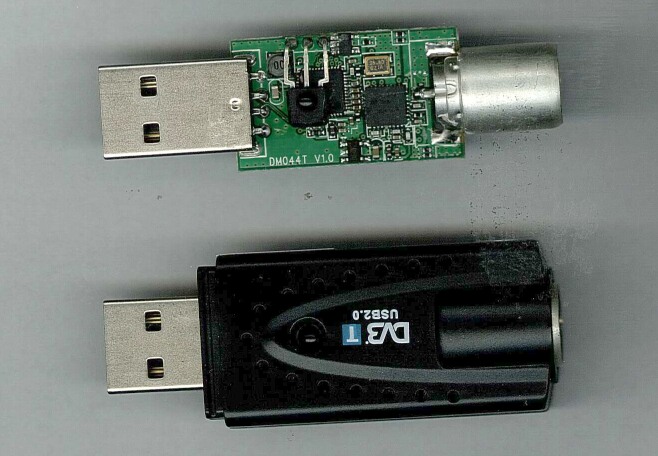The rtlsdr USB dongle.
Marketed as DVB-T LAPTOP DIGITAL TV Tuner USB Stick HDTV Realtek RTL2832U / E4000 SDR or similar one can find these surprisingly good receivers on the Internet for perhaps USD 20. They may look like the ones in figure 1.
| |||
|
Fig. 1. USB dongles for digital TV and FM radio.
| |
|
For more info look here: http://sdr.osmocom.org/trac/wiki/rtl-sdr This page contains measured data from the two units shown in figure 1. They are ezcap USB 2.0 DVB-T/DAB/FM dongles vith VID = 0x0bda and PID = 0x2838. The performance demonstrated here is with modified software for Linrad under Linux. Dongles with other tuners than the E4000 are not (yet?) supported in Linrad under Linux. Performance under Windows with the original software from osmocom june 2012.The noise figure is 19 dB at 144 MHz. This means that MDS (the noise floor in 500 Hz bandwidth) is at -128 dBm. When another signal in the passband reaches -69 dBm all signals are compressed by 3 dB. The reason is an AGC inside the RTL2832 chip.The dynamic range measured as the separation between MDS and the point of 3 dB compression is only 59 dB. For this reason rtlsdr is often classified as a toy rather than as a radio. Even so, the rtlsdr toy has became popular. Performance in linrad-03.40 under Linux.In linrad there is a gain control. With the rtlsdr USB stick it goes from -30 to +18 dB in steps of nominally 3 dB. The real gain steps are between 0 and 5 dB and the gain is changed at six different points in the signal path.The noise figure is of course lowest at maximum gain and as usual that comes with a loss of dynamic range. Table 1 shows Noise figures and the point of saturation for the two identical dongles in my possession. | |





